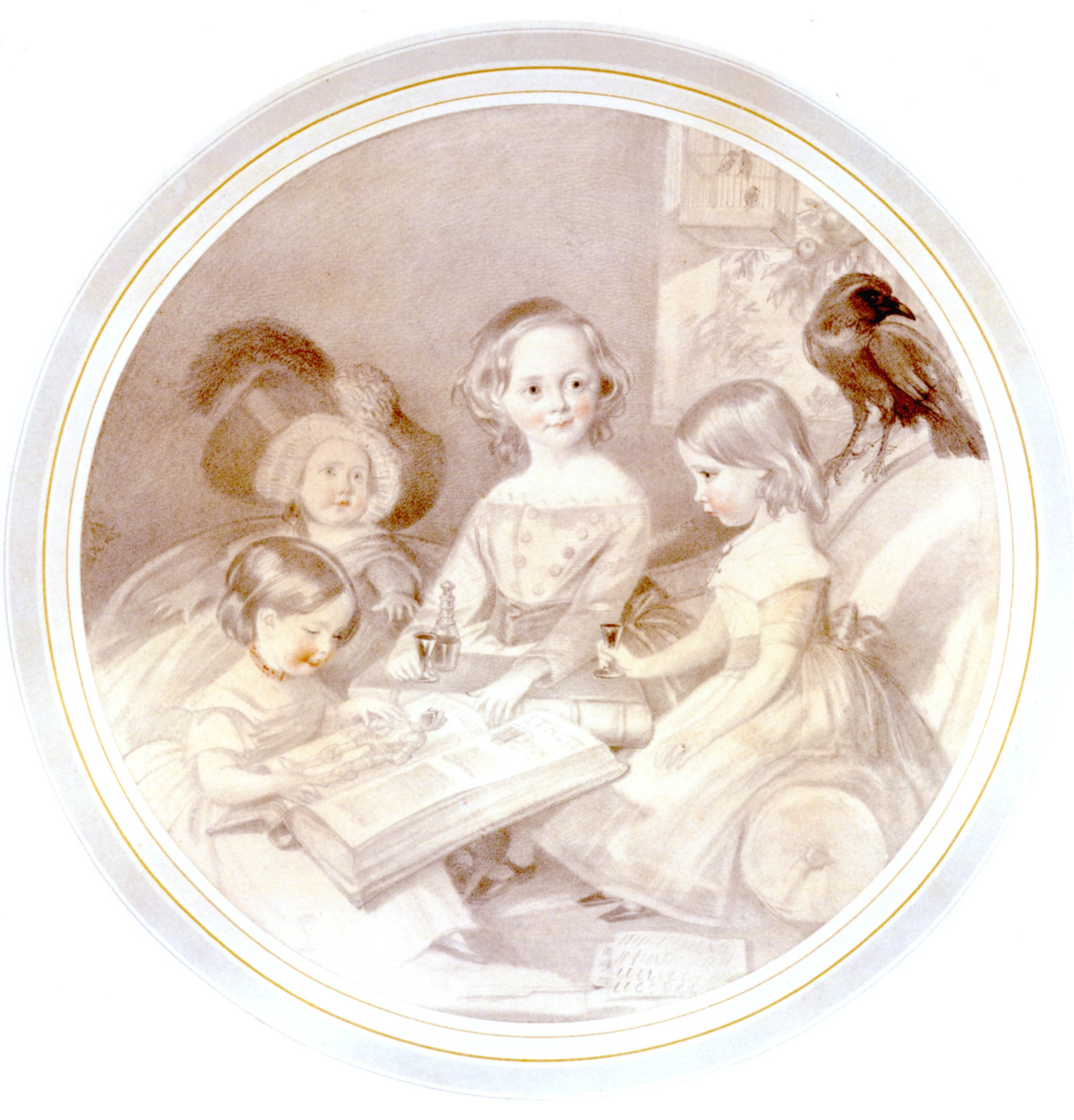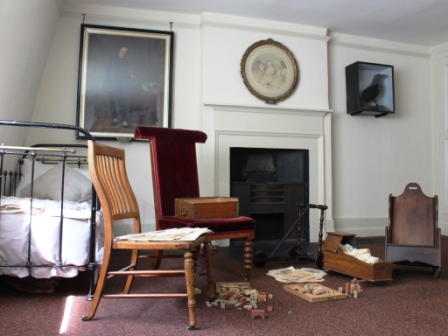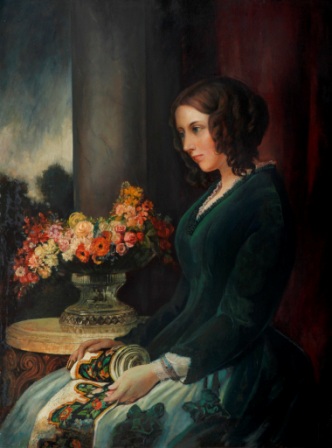Doting parents: Maclise portrait of the Dickens children and Grip by Louisa Price

The children of Charles Dickens by Daniel Maclise. 1841. Purchased with assistance from the ACE/V&A Purchase Grant Fund © Charles Dickens Museum
The Charles Dickens Museum tells the story of literary giant Charles Dickens and of 48 Doughty Street – the family home of Charles, his wife Catherine and their children in the 1830s.
The story of the home and family can sometimes get lost behind the larger than life public figure of Dickens. As curator of the Museum, it is always refreshing to find an object with a narrative that goes beyond Dickens as an author, and even better when it’s told from another point of view. One such object is a drawing on the top floor of the house that relates a special story of doting parents and a concerned mother.
48 Doughty Street was the family home of Charles Dickens from 1837 to 1839. The top floor nursery was recently refurbished in the Museum’s Great Expectations project. Above the fireplace in this room is hung a roundel portrait of Catherine and Charles Dickens’s children and their pet raven, Grip. A pencil and wash drawing, it was completed in 1841 by Daniel Maclise – a close friend of the family. The painting was acquired with the generous assistance of the Arts Council England and V&A Purchase Grant Fund.
It is a typical domestic scene showing the young children Charley, Katey, Mamie and Walter wearing dresses appropriate of their age and social standing. The children hold books, suggestive of education and the significance of literature to the family. The pet raven Grip stands father-like on the chaise lounge behind them (this was the second ‘Grip’; the first had died that year, but not before greatly delighting Dickens and inspiring the fictional raven featured in Barnaby Rudge).
In 1841, Dickens was invited to tour the USA. He was keen for his wife to join him but Catherine was reluctant to leave the children for six months. Maclise urged her to go – giving her this portrait of the children as encouragement to take the trip. It worked and Catherine duly agreed to accompany her husband. It was reported that the portrait was given a special place in the hotels where Charles and Catherine stayed. Dickens’s American secretary recalled the couple ‘talked constantly of their children and seemed to derive great comfort from the pictured presence of their little ones.’

The children of Charles Dickens by Daniel Maclise. 1841. Purchased with assistance from the ACE/V&A Purchase Grant Fund © Charles Dickens Museum
Fast forward 16 years, with a further six children, there was an increasing dissatisfaction on Dickens’s part with the marriage. Catherine and Charles separated in 1858. Dickens spoke publically about it: he published an article on the subject and wrote to friends, discrediting Catherine and criticising her abilities as a mother. Catherine remained silent on the matter.
One of my favourite paintings in the house is another by Daniel Maclise. It is an oil painting of Catherine in 1846. She looks off into the distance with some needlework in her lap. I love this painting but often worry that it doesn’t help us in challenging some of the misconceptions that surround Catherine. In seeking to tell the story of the Dickens family home here at 48 Doughty Street, I sometimes wish that we could add more of Catherine’s voice in the house. But even she hasn’t helped! Last week at the British Library I saw a collection of Charles’s letters to Catherine, deposited by daughter Katey at the instruction of her mother, so ‘that the world may know he loved me once.’ The letters are moving and we are left with no doubt of Dickens’s affection for his wife. But all of the letters are in his hand. Catherine is, again, silent.
It is in this context that the Maclise portrait of the children becomes even more important. It allows Catherine’s voice and opinion to be heard in the house. Catherine wrote to Maclise from the USA in 1842, ‘My beautiful sketch of our darlings is more admired than I can possibly describe.’ She continues: ‘It is in great demand wherever we go and Willis, the author actually asked me to give it to him; imagine such impudence! and audacity!‘
The story of the Maclise portrait of Dickens’s children tells us that Catherine and Charles were doting parents; that Charles loved Catherine and wanted her to attend the USA tour; and that Catherine was a concerned mother who took a lot of persuading by a close friend to relinquish her role as carer for her children for six months. The painting brings children into 48 Doughty Street and reminds us it was a family home.
Walter Dickens – the baby depicted in the painting – died in 1863. In 1872, another of the Dickens’s sons (Sydney) also died unexpectedly. This month the Museum was offered a letter written by Catherine where she expresses her grief and difficulty in dealing with Sydney’s death. This letter, like the Maclise portrait of the children, is an important addition to the Museum’s collection. The letter and portrait remind us that there was another principal player in the family and provides another voice on the subject of the Dickens family, their home and relationships.




